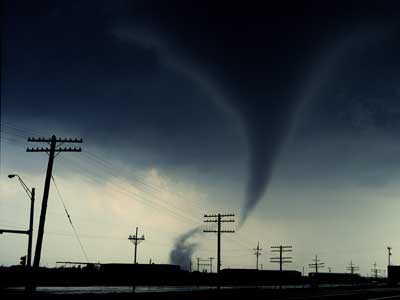How Tornadoes Work
Posted: Wed Aug 11, 2010 1:17 am

Myths are full of fantastic and destructive creatures. If it's not a city-leveling angel, then it's giants sauntering vengefully into unsuspecting towns. In reality, all the calamities we're liable to encounter are due to natural phenomena and human will. But of all the destructive powers in our world, none resembles the ferocity and form of those mythic monsters quite like tornadoes. These storms descend like a dagger from the clouds. They tower over the tallest buildings like titans. And when they lash out at their surroundings, they often seem to act with malicious, mindful intent.
Set aside fear and superstition, and you're still faced with one of the most awesome sights in the natural world. These twisting storm columns can reach wind speeds of 318 mph (512 kph) and measure miles across, scarring the Earth and decimating homes and buildings in the process. Yet, in some parts of the world, these powerful storms are a regular occurrence. The United States alone experiences more than 1,000 tornadoes a year, and the storms have been reported on every continent except Antarctica [source: Tarbuck].
While most storms are weak and occur in sparsely populated areas, tornadoes have been known to hit large metropolitan areas, and they have inflicted heavy casualties on many towns and cities. In 1925, the infamous U.S. tristate twister hit parts of Missouri, Illinois and Indiana, claiming 695 lives.
In this article, we'll examine how a tornado's vortex works, take a close look at tornado formation and discuss the system we use to classify them.
More/Source: http://snipr.com/10hox7